
Our Blog
Use our blog as a resource of information pertaining to lawn and landscape maintenance information and services for your properties.

Use our blog as a resource of information pertaining to lawn and landscape maintenance information and services for your properties.
1 . Choose a rain barrel made with food-grade plastic that holds at least 55 gallons of water. Locate it uphill from the area you’d like to irrigate, near a downspout, and on a hard, flat surface. You can increase the water pressure coming from your rain barrel by elevating it on cinder blocks. To create a cinder-block base, place three 8-by-8-by-16-inch cinderblocks lengthwise (flat surface down, holes pointed out) and arrange them so they form a triangle. Check to make sure the blocks are level and then center the rain barrel on top of the base.
. Choose a rain barrel made with food-grade plastic that holds at least 55 gallons of water. Locate it uphill from the area you’d like to irrigate, near a downspout, and on a hard, flat surface. You can increase the water pressure coming from your rain barrel by elevating it on cinder blocks. To create a cinder-block base, place three 8-by-8-by-16-inch cinderblocks lengthwise (flat surface down, holes pointed out) and arrange them so they form a triangle. Check to make sure the blocks are level and then center the rain barrel on top of the base.
2. Select a front side for your barrel and attach a 3/4-inch spigot about 2 inches from the bottom using a bulkhead fitting. Reach down into the barrel to determine the lowest spot you can position the fitting, and drill a hole in the outside of the barrel. Thread the spigot into the fitting (using a reducer, or bushing, if necessary) so you get a tight, leak-free fit. “Use a spigot with a 3/4-inch male inlet, rather than a 1/2-inch one, because it allows more water to flow through, which is especially important if you plan to hook a soaker hose up to the barrel,” says Lenny Librizzi, who has installed 40 rainwater-harvesting systems for community gardens (including a couple as part of the Organic Gardening WaterWorks project) in his work for the Council on the Environment in New York City.
lowest spot you can position the fitting, and drill a hole in the outside of the barrel. Thread the spigot into the fitting (using a reducer, or bushing, if necessary) so you get a tight, leak-free fit. “Use a spigot with a 3/4-inch male inlet, rather than a 1/2-inch one, because it allows more water to flow through, which is especially important if you plan to hook a soaker hose up to the barrel,” says Lenny Librizzi, who has installed 40 rainwater-harvesting systems for community gardens (including a couple as part of the Organic Gardening WaterWorks project) in his work for the Council on the Environment in New York City.
 3. Prevent your rain barrel from overflowing by installing a downspout diverter. This ...
3. Prevent your rain barrel from overflowing by installing a downspout diverter. This ...
Rhododendron-Facts
Height: 5 feet
Spread: 5 feet
Sunlight: ![]()
![]()
Hardiness Zone: 3b
Group/Class: P.J.M. Series
Description:
A pretty broad-leaf evergreen shrub with showy purple-pink flowers in spring and a compact upright habit, very hardy, interesting fall coloration; absolutely must have well-drained, highly acidic and organic soil, use plenty of peat moss when planting
Ornamental Features:
P.J.M. Rhododendron is covered in stunning clusters of lightly-scented lavender trumpet-shaped flowers with rose overtones at the ends of the branches in mid spring, which emerge from distinctive fuchsia flower buds. It has green foliage. The narrow leaves turn an outstanding purple in the fall. The fruit is not ornamentally significant. The smooth gray bark is not particularly outstanding.
Landscape Attributes:
P.J.M. Rhododendron is an open multi-stemmed evergreen shrub with a more or less rounded form. Its relatively coarse texture can be used to stand it apart from other landscape plants with finer foliage.
This shrub will require occasional maintenance and upkeep, and should only be pruned after flowering to avoid removing any of the current season’s flowers. It has no significant negative characteristics.
P.J.M. Rhododendron is recommended for the following landscape applications;
Plant Characteristics:
P.J.M. Rhododendron...
Hiring a Landscape Certified Contractor: An Olympic-style achievement.
What it actually means to be Landscape Industry Certified- Did you know that 3 of our employees are certified already? And 2 more on their way!!
https://www.youtube.com/watch?v=DXlGoW99iEE&feature=youtu.be
Many people enjoy seeing birds in the winter. It seems to bring LIFE to the otherwise barren landscape. Attracting birds is not difficult, and in fact can be easier to do in the winter than any other time of year when there are many food choices readily available. Birds, like humans, have three basic needs to survive the winter: water, food, and shelter. You can provide these needs through wise choices with your landscaping or with supplemental baths, feeders, and shelters.
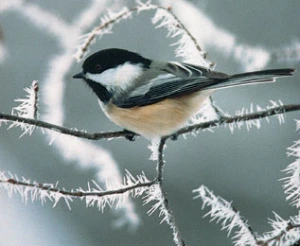 Frigid temperatures, blustery storms and limited food supplies make winter the harshest season for wild birds. Bird mortality is actually quite high throughout the long winter season. Homeowners who supply the basic needs for birds are quickly rewarded with visual delight as they can observe a diverse flock of nature’s finest feathered friends. For best results, I advise you to start early in the autumn to prepare your yard for winter so birds can learn it is a safe place long before they are in desperate need.
Frigid temperatures, blustery storms and limited food supplies make winter the harshest season for wild birds. Bird mortality is actually quite high throughout the long winter season. Homeowners who supply the basic needs for birds are quickly rewarded with visual delight as they can observe a diverse flock of nature’s finest feathered friends. For best results, I advise you to start early in the autumn to prepare your yard for winter so birds can learn it is a safe place long before they are in desperate need.
 Birds require water to survive; while they are capable of melting snow and ice, this requires an immense amount of energy. Furthermore, when we have no snow or ice on the ground, birds need to fly greater distances, sometimes exposing themselves to severe cold and subjecting themselves to other threats. Supply fresh water and you will readily attract many birds in the winter. To...
Birds require water to survive; while they are capable of melting snow and ice, this requires an immense amount of energy. Furthermore, when we have no snow or ice on the ground, birds need to fly greater distances, sometimes exposing themselves to severe cold and subjecting themselves to other threats. Supply fresh water and you will readily attract many birds in the winter. To...


Hosta growers always seem to have their fair share (or Unfair) share of slugs. In my years in horticulture, I can’t really think of any other plant that gets “slugged” more than hostas, and last year seemed to be a big year for them!
 Slugs are related to snails. Like snails, they need a damp environment to survive. Remember how cool and wet last spring (2013) was? Bad for us, but heavenly for slugs- They thrived during a normal season. Slugs protect themselves from drying out by hiding during the day and feeding at night. The feeding damage appears on the leaves as large irregular holes, making your plants pretty unattractive. There are many different methods you may have heard or read about- suggesting control methods. But you’ve “tried them all”, and can’t seem to find one that truly works right?
Slugs are related to snails. Like snails, they need a damp environment to survive. Remember how cool and wet last spring (2013) was? Bad for us, but heavenly for slugs- They thrived during a normal season. Slugs protect themselves from drying out by hiding during the day and feeding at night. The feeding damage appears on the leaves as large irregular holes, making your plants pretty unattractive. There are many different methods you may have heard or read about- suggesting control methods. But you’ve “tried them all”, and can’t seem to find one that truly works right?
As more than just your typical landscape company, Beautiful Blooms and their team of trained and educated horticulturalists, has advanced in the green industry focusing on sustainability- therefore- chemical reliance is little to none. We suggest you start with the basics. themselves from drying out by hiding during the day and feeding at night.
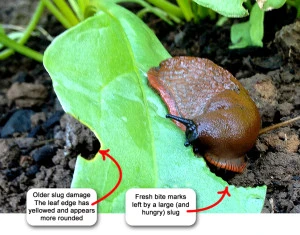 The first thing you do, is clean up your beds and areas around the damaged plants. Eliminate the daytime hiding places for slugs by removing leaf debris, along with things like bricks, boards, or other damp...
The first thing you do, is clean up your beds and areas around the damaged plants. Eliminate the daytime hiding places for slugs by removing leaf debris, along with things like bricks, boards, or other damp...
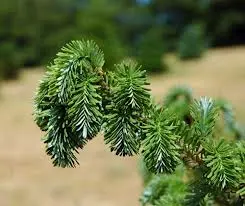 Remember the summer of 2012? Wisconsin along with much of the nation experienced a severe drought. If you were a client of Beautiful Blooms, then you may recall an E-Mail we sent out, suggesting that you forgo setting up the sprinkler to water your lawn and focus on saving your trees and shrubs instead. The reasoning behind this was that you have invested a large amount of time (as in, years!) and money (possibly hundreds or even thousands of dollars) in your mature trees and shrubs and they are not easily replaceable, unlike turf, annuals and perennials. Your loss would be greater if a 35 ft Autumn Blaze Maple were to die than if your Picasso Geraniums died. I’m sure many of you followed her advice, but I’m also guessing some of you did not. And it may be because you simply did not know how to go about it, so let’s address that so the next time we face a drought of that magnitude- and we will- you are prepared to save those trees and larger shrubs!
Remember the summer of 2012? Wisconsin along with much of the nation experienced a severe drought. If you were a client of Beautiful Blooms, then you may recall an E-Mail we sent out, suggesting that you forgo setting up the sprinkler to water your lawn and focus on saving your trees and shrubs instead. The reasoning behind this was that you have invested a large amount of time (as in, years!) and money (possibly hundreds or even thousands of dollars) in your mature trees and shrubs and they are not easily replaceable, unlike turf, annuals and perennials. Your loss would be greater if a 35 ft Autumn Blaze Maple were to die than if your Picasso Geraniums died. I’m sure many of you followed her advice, but I’m also guessing some of you did not. And it may be because you simply did not know how to go about it, so let’s address that so the next time we face a drought of that magnitude- and we will- you are prepared to save those trees and larger shrubs!
Irrigation can account for up to 75% of annual municipal water use (according to a study by the University of Utah) and much of it is applied in excess of a plants needs due to over-spray and improper watering techniques. Proper irrigation encourages deeper root growth which leads to healthier more drought tolerant plants. Trees take up and use a lot of water when the temperature climbs, the problem is that, they do not show wilt as easily as ...
 Picture this: It’s a beautiful, sunny, summer day, and you’re finally sitting down at the dinner table to enjoy a fresh salad with crisp lettuce, juicy tomatoes, crunchy cucumbers, maybe even a few fresh green beans or green onion… and fresh strawberries, raspberries, or apple slices on the side. The best part? All of these fruits and vegetables were grown on your own property.
Picture this: It’s a beautiful, sunny, summer day, and you’re finally sitting down at the dinner table to enjoy a fresh salad with crisp lettuce, juicy tomatoes, crunchy cucumbers, maybe even a few fresh green beans or green onion… and fresh strawberries, raspberries, or apple slices on the side. The best part? All of these fruits and vegetables were grown on your own property.
Whether you have a tiny balcony or patio, or a large back garden, the possibilities and ability to grow your own food is a great project that will reap any rewards! One of the biggest benefits of growing and eating your own food, is that it’s healthy! The fruits and vegetables you grow at home will be more nutritious and healthy for you than the ones you buy at the grocery store because you cannot get any fresher! Not to mention, the produce you pick from your garden will probably not be sprayed with pesticides! Did you know that you are more likely to eat more fruits and veggies if you grow them yourself? Studies have shown that families who grow their own produce are more than twice as likely to eat the recommended 5 servings of fruit and veggies per day, they also enjoy and appreciate them more! That makes sense doesn’t it? You stay healthier by being outdoors more often, getting a little exercise, fresh air, gardening… Believe it or not, you can save money on your food bill too! Produce...
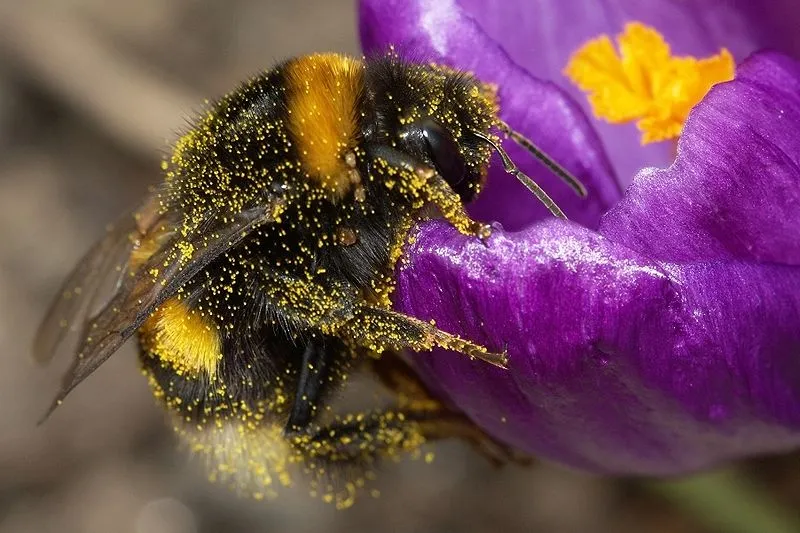 If you are an avid gardener, you know how great it is to have bumble bees in your garden. Not honey bees, but bumble bees. Bumble bees are friendlier than honey bees and typically, will not sting unless they are being handled roughly or harmed. Unlike honey bees, they do not “swarm”, nor do they attack like wasps. They do not live in hives or make large amounts of honey, but they have equally important roles in the ecosystem. This is why we need to attract and encourage bumble bees into our yards.
If you are an avid gardener, you know how great it is to have bumble bees in your garden. Not honey bees, but bumble bees. Bumble bees are friendlier than honey bees and typically, will not sting unless they are being handled roughly or harmed. Unlike honey bees, they do not “swarm”, nor do they attack like wasps. They do not live in hives or make large amounts of honey, but they have equally important roles in the ecosystem. This is why we need to attract and encourage bumble bees into our yards.
Humans have known the value of bees in agriculture for centuries. They are the most effective pollinators in the world and an invaluable resource in agriculture technology. About two-thirds of the world’s crops rely on bees and other pollinators; without them, there would be no fruits or vegetables. As a society, we are just starting to realize their power in bolstering the health and productivity of the home garden. Bees are just too important to be ignored.
By creating a more “bee friendly” yard and landscape, it will be easier for you to attract bees and keep them coming back! Avoid pesticides! Bumble bees, and other pollinators, respond to insecticides and herbicides commonly used for controlling Japanese beetles and Emerald ash borer. Even minimal exposure can cause bees to have problems flying, and they can lose their sense of taste. Planting flowers that...
 One of the first things to do each season is to start with a good spring clean-up; an all-over clean up and review of your lawn & landscape (including plants, shrubs, trees, and their beds). Fallen branches, debris that has been blown in from the neighbor’s yard, and “gifts” the snow plow delivered (chunks of sod, anyone??) all need to be removed. It is a huge part of maintaining a clean, crisp, great looking landscape.
One of the first things to do each season is to start with a good spring clean-up; an all-over clean up and review of your lawn & landscape (including plants, shrubs, trees, and their beds). Fallen branches, debris that has been blown in from the neighbor’s yard, and “gifts” the snow plow delivered (chunks of sod, anyone??) all need to be removed. It is a huge part of maintaining a clean, crisp, great looking landscape.
For starters: Remove debris. Strong winds, heavy snow, and even rain can bring down tree limbs. Twigs, leaves, garbage, and other debris can be blown in from neighboring properties, and then covered up by snow- unbeknownst to you! All these things need to be picked up and removed from the property.
Break up the snow mold on the lawn: When snow lingers on the lawn for too long, especially when the large piles of snow sat for months, the grass can become infected. The best thing to do is lightly rake the area to break up the mold and promote some air flow. The new grass growth will quickly fill in. Problem solved.
Pruning: As soon as the weather begins to warm up in late winter and very early spring, plants should be uncovered (if covering took place at you fall clean up) and any dead dying or broken limbs should be pruned. Roses may also be pruned at this time. The goal is to encourage new growth, and “open it up” allowing air movement and sunlight to...
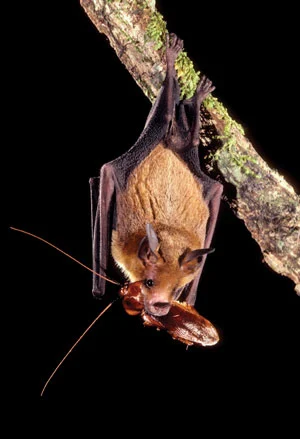 In a blog article I wrote a few months ago I sang the praises of bees, and why they are so important within the ecosystem, why you should want them in your yard, and what you can do to attract them to your garden for pollination. Did you know that bats are important pollinators too? And THE BEST organic pesticide there is? It’s true! Need some convincing? Here it goes.
In a blog article I wrote a few months ago I sang the praises of bees, and why they are so important within the ecosystem, why you should want them in your yard, and what you can do to attract them to your garden for pollination. Did you know that bats are important pollinators too? And THE BEST organic pesticide there is? It’s true! Need some convincing? Here it goes.
For starters, bats are helpful, and not as bad as some make them out to be. They have got an undeserved reputation for being gross. Bats are the only mammals that can truly fly- their wings are actually hands- that have adapted for flight. They are very flexible, and able to move independently, and, as mammals, they actually spend a great deal of time cleaning their fur! Bats have no more incidences of rabies than other mammals, in fact, less than 1% of bats are said to be infected with rabies, and transmission from bats accounts for 1 death per year in the US. (A statistic much less than that of dog bites and lightning strikes. Weary of Vampire bats? Don’t be! Of the 1200+ species of bats in the world, there are only 3 that feed on blood of livestock (by licking, not sucking), and all 3 types live in Latin America. No worries!
The pre-dominant role of bats in the echo-system, is that of insect predators and plant pollinators. In one night, a single bat can eat 3,000-7,000 insects, including mosquitoes. Fruit bats have...
Just complete the form below to get a pricing quote.
